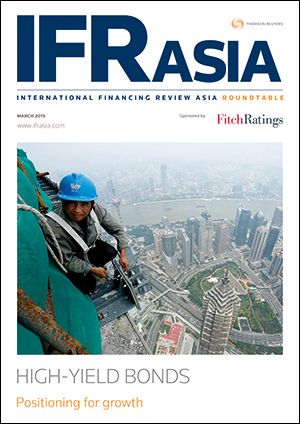IFR Asia’s High-Yield Roundtable took place on February 10, against a fascinating backdrop in the Asian credit markets. Weeks earlier, Chinese property developer Kaisa Group announced it had failed to repay a loan after local authorities blocked its sales and its chairman left, spreading panic among high-yield investors and raising fears of a systemic crisis.
The Chinese property sector is, by far, the largest source of high-yield bonds in Asia – Kaisa alone has US$2.5bn of offshore notes outstanding – and investors and analysts were left guessing if the company’s woes would become more widespread.
Kaisa’s bonds tumbled to around 30 cents on the dollar from par in early December. Other developers saw their funding costs jump, as nervous investors wiped as much as 10 points off the prices of their debt.
The emergence of a white knight, in the form of fellow property developer Sunac China, allowed Kaisa to avoid a default on a January coupon payment, but raised more questions for the bond markets. Would the company’s new owners honour its obligations in full? Did the government have a hand in Kaisa’s rescue? How far would China’s authorities go to punish individual businessmen?
Kaisa has since asked bondholders to term out their maturities and slash coupon rates, providing a painful reminder that high-yield investments come with very real risks of losses.
The key question for the High-Yield Roundtable to debate, then, was whether or not the Kaisa saga would have any lasting implications for the broader Asian market.
IFR put that question to a cross-section of market participants, including fund managers, debt-capital markets bankers, a rating analyst, legal expert and distressed-debt trader. The issuer community was also represented, and Times Property’s CFO would be back in the market in early March with the company’s second US dollar bond.
China property dominates the Asian high-yield arena and it was no surprise that the Kaisa episode dominated discussion around the table. However, it was also clear from the conversation that investors are looking for opportunities to diversify their exposure, and talk of growing market liquidity, new issuers and new structures generated an encouraging level of excitement.
Asia’s high-yield debt market has grown rapidly over the past two years, and confidence remains high that new issuance will pick up in the second half of the year once the dust settles around Kaisa and the outlook for US rates becomes clearer.
The backdrop may be uncertain, but the growing interest in Asian high-yield from all corners of the market provides real encouragement for the future.
To view all special report articles please click here and to see the digital version of this report please click here .
To purchase printed copies or a PDF of this report, please email gloria.balbastro@thomsonreuters.com .
